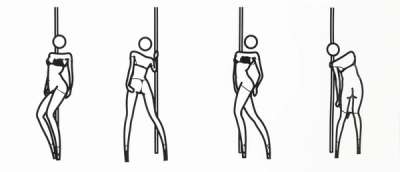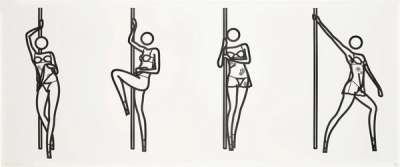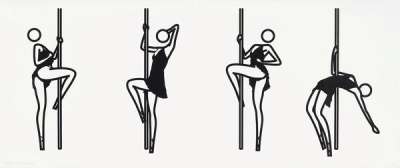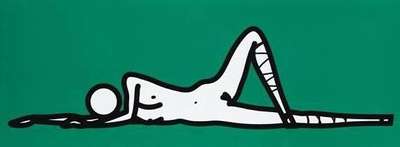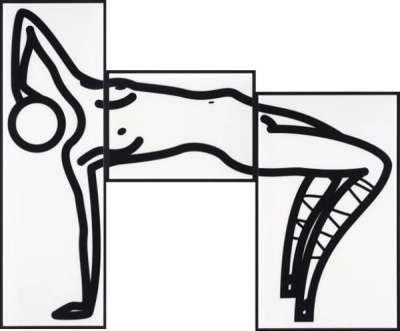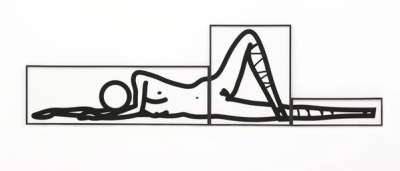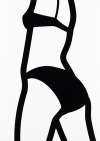This
Is Shahnoza
In 2005, Julian Opie asked a professional pole dancer, Shahnoza, to pose for him in a variety of choreographed moves, collected here in print form. Working with the female nude, a genre steeped in art historical tradition, Opie unsettles the high art definition through his empowered images from the ‘low’ culture of strip clubs.
Julian Opie This Is Shahnoza For sale
This Is Shahnoza Value (5 Years)
The This Is Shahnoza series by Julian Opie features both signed and unsigned editions, which diverge significantly in value. Signed examples consistently command premiums, with hammer prices reaching up to £29763. Across the series, 54 total auction sales have been recorded, with an average annual growth rate of 8.58%. For collectors, edition type plays a pivotal role in value potential within this series.
This Is Shahnoza Market value
Auction Results
| Artwork | Auction Date | Auction House | Return to Seller | Hammer Price | Buyer Paid |
|---|---|---|---|---|---|
 This Is Shahnoza In 3 Parts 2 Julian Opie Signed Mixed Media | 20 Mar 2024 | Phillips London | £7,650 | £9,000 | £12,500 |
This Is Shahnoza 3 Julian Opie Signed Print | 7 Jun 2023 | Phillips London | £8,075 | £9,500 | £12,500 |
This Is Shahnoza In 3 Parts 6 Julian Opie Signed Mixed Media | 14 Jun 2022 | Phillips London | £23,800 | £28,000 | £40,000 |
This Is Shahnoza 2 Julian Opie Signed Print | 14 Jun 2022 | Phillips London | £5,950 | £7,000 | £9,500 |
This Is Shahnoza 4 Julian Opie Signed Print | 9 Dec 2021 | Phillips London | £3,528 | £4,150 | £5,500 |
This Is Shahnoza 5 Julian Opie Signed Print | 14 Sept 2021 | Sotheby's Online | £3,613 | £4,250 | £5,500 |
This Is Shahnoza 1 Julian Opie Signed Print | 14 Sept 2021 | Sotheby's Online | £4,038 | £4,750 | £6,500 |
This Is Shahnoza Horizontal 7 Julian Opie Signed Print | 9 May 2021 | Stockholms Auction House | £11,900 | £14,000 | £17,000 |
Sell Your Art
with Us
with Us
Join Our Network of Collectors. Buy, Sell and Track Demand
Meaning & Analysis
Julian Opie’s This Is Shahnoza collection brings together a number of images of the same model, Shahnoza, in a multitude of varying poses and compositions, her shape delineated clearly by bold, black outlines.
In 2006 Opie was commissioned to create a mural for the Art Gallery of Ontario and chose a room of Henry Moore sculptures, mostly reclining nudes, to have his work installed. Opie’s This Is Shahnoza series from 2005 is a printed edition collection of the images used for the wall mural and each print shows Shahnoza in a sequence of four static poses dancing around a pole. From this series stemmed the This Is Shahnoza Horizontal and This Is Shahnoza in 3 Parts series, revealing Opie’s enthrallment with this particular subject and his desire to produce as many variations as possible on the nude form.
Opie was initially inspired to respond to Moore’s reclining nudes but wanted to produce images of these poses without conventional props like a bed, chair or even the floor. With a desire to liberate the human body from gravity, Opie asked a professional pole dancer, Shahnoza, to pose for him in a variety of choreographed moves.
This Is Shahnoza is exemplary of Opie’s working process that is far more arduous than the set of three series’ initially appear. In order to create these prints, Opie worked with Shahnoza for two days, taking over 1,000 photographs each day, simultaneously using two video cameras to capture her movements in real time. Opie then chooses the best photographs and manipulates them on the computer to produce a variety of images.
As with many of Opie’s figures, Shahnoza is anonymised by her featureless face and thus is reduced to a ‘type’, rather than as an individual to be recognised. At the same time, Opie depicts the figure as always facing the viewer, and so by self-consciously subjecting herself to being looked at, she maintains her sovereignty over the desiring gaze and disrupts the expectations of the viewer.
Opie depicts the human form in a highly stylised manner showing the model’s head as a blank circle, without a neck and her feet cut off, showing only straps for shoes. Despite the figure’s abstracted form, her pose is decidedly realistic, no doubt due to Opie’s use of photography in the initial stages of creating the print. Opie’s images of people engage with longstanding ideas that have characterised art history by questioning what intrinsic elements are needed to convey a person’s character.

